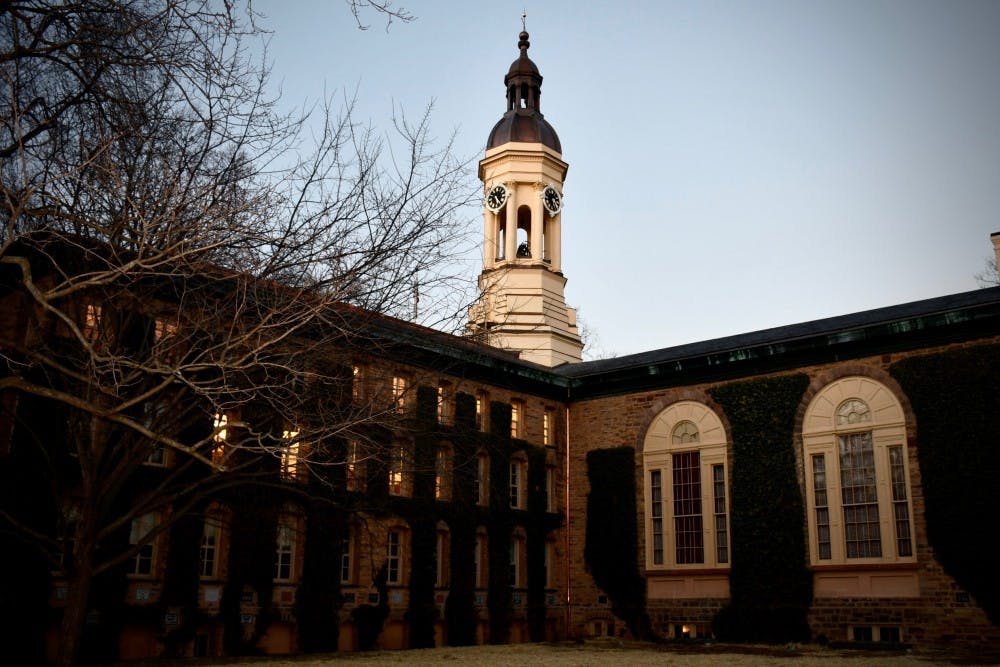In 2017, I published an article in The Daily Princetonian asking where the female faculty at Princeton were — the answer was that they are obscured by the sea of white-male faculty. While many of those male professors are excellent educators and mentors, the lack of female professors on campus should be disturbing, especially in light of the fact that about half of University students are female.
There are multiple concrete factors that contribute to the leaky pipeline in academia, which I will explore in a series of articles this fall. The first has particular relevance to the University — the chronic sexual harassment of women in the academy.
For some local context: according to University-provided data, as of 2017, 32 percent of faculty at the University were women. During the last academic year, only 26 percent of full professors were women. In 2016, Princeton ranked in the middle of 12 elite universities for gender parity in hiring. While the University has hosted meetings and conferences on the issue, long-term efforts to hire more women have been inconsistent and unequal across departments. In 2013, the Trustee Ad Hoc Committee on Diversity released its Report on Diversity, which emphasizes departmental responsibility for improving diversity at Princeton. The authors note that while Molecular Biology has implemented programs in its doctoral programs, other departments have done little in response to the Committee’s previous recommendations.
This problem is not due to a lack of female candidates for academic positions. Nationwide, women generally make up over half of undergraduate and almost 60 percent of doctoral students.
But at the University, the share of post-undergraduate students falls about 10 percentage points at each stage of promotion, leaving only 31 percent of postdoc positions filled by women. And the disparity is largest at the highest faculty level: there are three male full professors for every female full professor.
One of the reasons women flood out of the academic pipeline is chronic sexual harassment. Even aside from the negative effects of sexual harassment on a woman’s psychological and physical health, sexual harassment in academia often forces female researchers to change field sites, research topics, or departments to avoid harassers; this disrupts the course of their career, as they have to develop expertise from scratch.
The specific nature of academia makes this particularly damaging for a postgrad’s career, as supervisors have been found to withhold information needed for research or to cause psychological trauma that impacts a researcher’s ability to publish data collected during the experience. Many female medical students, for example, reported that their career advancement had been impacted by sexual harassment.
Universities across the globe, despite statements in support of gender and racial diversity, have accepted and perpetuated the culture of sexual harassment that weakens the career pipeline. There is little institutional acknowledgement that the very structure of these institutions makes women and other marginalized populations particularly vulnerable to sexual harassment. An academic at the University of California, Irvine, told an interviewer, “I did not file a complaint. This is a very senior person on campus and under no circumstance would I have filed anything. Until you get tenure, you have to take care of yourself, basically.”
Indeed, researchers have found that “in many of these instances, respondents reported that other men appeared to be rewarded for what the respondent viewed as poor or inappropriate behavior and women were only rewarded if they consented to harassment or sexual advances.”
Despite the fact that having female professors concretely benefits students, especially female students (as I laid out in my original article on this topic), Princeton has not done enough to address this roadblock to female advancement. The University’s handling of the Verdú sexual harassment case has been criticized; a petition in The Daily Princetonian stated that “while Professor Verdú was found unequivocally to be in violation of Princeton University’s policy on Sex Discrimination and Sexual Misconduct, he has remained a salaried employee of the University, maintaining his prestigious position as Eugene Higgins Professor of Electrical Engineering and continuing in his teaching and research advising roles without interruption.”
Although Verdú was eventually dismissed, this was only after widespread uproar on campus in response to the original lack of punishment and nearly a year of administrative logjam. Little has been done to systematically address this specific type of sexual harassment. If the University truly valued increasing the number of female professors on its payroll, it would do well to start addressing the actual causes for the dearth of women at the highest ranks. This unequivocally includes sexual harassment.
Madeleine Marr is a junior from Newtown Square, Pa. She can be reached at mmarr@princeton.edu.









